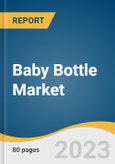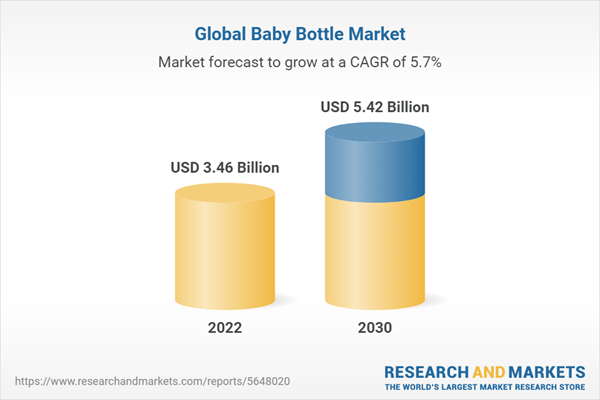Milk formula is the fastest-growing category in the baby packaged foods market owing to its many benefits, such as convenience and flexibility of feeding. The demand for infant formula can also be attributed to factors such as the hectic work schedules of parents, an increasing number of working women, and a growing number of mothers who are either unable to breastfeed or choose not to. On the heels of this, an increasing number of companies like Nestlé and Abbott have been introducing new baby formula products in the market. This is likely to drive the growth of the market for baby feeding products, including baby bottles, in the near future.
The introduction of BPA-free baby bottles is a key trend observed in the market. Bisphenol A (BPA) is known to cause severe health conditions like thyroid, brain abnormalities, prostate and breast cancer, infertility, and heart diseases. Looking to capitalize on the growing demand for baby bottles, many players operating in the market are concentrating on expanding their businesses by offering advanced and BPA-free products.
Also, the companies such as Nestlé and Abbott are collaborating with leading milk formula producers to catalyze the sales of baby bottles. Manufacturers are also focusing on developing advanced baby bottles with improved features such as flow-controllable nipples, temperature indicator devices, and better raw materials like glass and silicone to gain a competitive edge.
Furthermore, e-commerce has expanded manufacturers' opportunities by providing them with a large selling platform, a stronger distribution channel, and a wider geographic reach. These online baby product stores provide a wide range of products for infants and toddlers, and this trend has grown in popularity and customer approval over the last five years.
In addition, although retail had a difficult year in 2020 overall, according to eMarketer, several national markets enjoyed double-digit e-commerce growth in 2021. For example, in 2021, e-commerce sales in Russia, the United Kingdom, and the Philippines increased by more than 20%.
Moreover, customers are also adopting sustainable and natural products. For instance, Dr. Brown's baby bottles are manufactured using pharmaceutical-grade borosilicate glass and feature a breast-like silicone teat that is curved for a natural latch and bottle-feeding experience. The bottles are clinically proven to alleviate colic and have an inbuilt vent mechanism that conducts air away from the baby's feed. The detachable interior vent system is made of plastic but it's polypropylene, which is the safest type because of its great heat tolerance.
Baby Bottle Market Report Highlights
- Plastic baby bottles dominated the global market share in 2022. They are lightweight and can be easily washed by hand or in a dishwasher, making them convenient for busy parents. PP-based bottles are the most common type of plastic feeding bottles owing to their durability and flexibility
- The online distribution channel is anticipated to dominate the global baby bottle industry over the forecast period. The growing number of tech-savvy consumers and the increasing variety of goods available on online platforms are the major factors expected to favor the growth of the online channel in the coming years
- Asia Pacific baby bottle industry dominated the global market share in 2022. The large infant population, particularly in countries like China and India, contributes to the increased demand for baby bottles. In addition, the region is experiencing rapid urbanization and evolving lifestyles, with more women joining the workforce
Table of Contents
Companies Mentioned
- Pigeon Corporation
- Medela AG
- Goodbaby International Holdings Limited
- Koninklijke Philips N.V.
- Handi-Craft Company
- Artsana S.p.A
- Comotomo
- Richell Corporation
- Munchkin, Inc.
- Nanobebe US LTD
Table Information
| Report Attribute | Details |
|---|---|
| No. of Pages | 80 |
| Published | July 2023 |
| Forecast Period | 2022 - 2030 |
| Estimated Market Value ( USD | $ 3.46 billion |
| Forecasted Market Value ( USD | $ 5.42 billion |
| Compound Annual Growth Rate | 5.7% |
| Regions Covered | Global |
| No. of Companies Mentioned | 10 |









